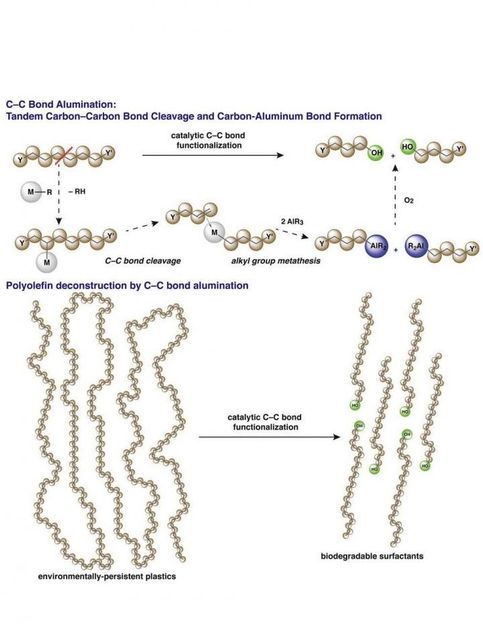Rice and rice products contain high levels of inorganic arsenic
The BfR recommends investigating possibilities of minimising the levels of arsenic in rice products
Analyses by the monitoring authorities of the federal states show that rice and rice products contain relatively high levels of inorganic arsenic. During these analyses, it was also noted that some rice products, such as rice cakes, contain greater amounts of inorganic arsenic than grains of rice. "The reasons for the higher levels in certain rice products as compared to grains of rice need to be clarified," said the President of the Federal Institute for Risk Assessment (BfR), Professor Dr. Dr. Andreas Hensel. "Because inorganic arsenic compounds are classified as carcinogenic for humans, foodstuffs should only contain as little as reasonably achievable". The BfR has calculated the intake of the particularly toxic inorganic arsenic compounds through the consumption of rice and rice products for the population of Germany. According to these calculations, depend ing on dietary habits, these foods could make a significant contribution to the overall intake of inorganic arsenic determined by the European food Safety Authority (EFSA), especially in children.
Arsenic occurs naturally in the earth’s crust, is released through natural and anthropogenic processes such as the smelting of copper and lead and the use of fossil fuels, enters soil, groundwater and surface water, and can then be absorbed by plants. In food, arsenic occurs both in the form of organic compounds (e.g. in fish and seafood) and inorganic compounds. Inorganic arsenic compounds are classified as carcinogenic in humans. In addition, when consumed over long periods of time, even in relatively small amounts, they can result in skin changes and vascular and nerve damage, as well as being toxic to development and contributing to cardiovascular problems.
Due to the specific cultivation methods and the physiology of rice plants, rice and therefore rice products too show high levels of inorganic arsenic compounds as compared to other cereals. The BfR has assessed the health risk to the population of Germany on the basis of values measured by the federal states on arsenic levels in rice and rice products. In the scope of this assessment, with the aid of consumption data, the daily intake of inorganic arsenic was calculated for the different groups of the population, such as infants, toddlers, children and adults, according to their dietary habits. Conclusion: the intake level of inorganic arsenic compounds through rice and rice products is relatively high. Therefore, depending on dietary habits, rice can make a significant contribution to the overall consumption of inorganic arsenic compounds. Because a safe intake level not associated with an increased risk of cancer cannot be defined for the carcinogenic effect of inorganic arsenic compounds, the BfR takes the view that the levels of inorganic arsenic compounds in foods should be reduced to an unavoidable minimum (ALARA principle). The ALARA (as low as reasonably achievable) principle means that the content of a substance in a food item should be kept as low as reasonably achievable by means of technical or other measures.
The data on rice products available to date shows that the levels in some of the analysed rice products are higher than in grains of rice. The reason for this is not yet known. The BfR therefore advises food companies to clarify the reasons for the higher amounts of arsenic compounds in certain rice products as compared to grains of rice and to investigate possibilities of minimising the arsenic levels in these products in line with the ALARA principle.
Consumers cannot tell how much arsenic is contained in their food. In light of this, the BfR welcomes the European Commission’s decision to introduce maximum limits for inorganic arsenic in rice and rice products at a European level. The following recommendations by the BfR will remain valid even after the introduction of maximum limits.
The BfR recommends consuming products such as rice cakes or rice flakes/rice pudding in moderation and varying these products with products based on other cereals. Parents are advised not to feed their babies or toddlers exclusively with rice-based drinks such as rice milk or food such as rice pudding. Consumers who suffer from coeliac disease or have an adverse reaction to gluten should avoid focusing solely on rice and rice products when choosing gluten-free cereals. In addition to rice, they could add other gluten-free cereals such as maize, millet, buckwheat, amaranth or quinoa to their diet.
Nevertheless, rice should remain part of a balanced diet. When selecting food items, consumers should observe the general recommendation on a varied and diverse diet, and should vary the types of cereal they consume, if possible.
Other news from the department science

Get the chemical industry in your inbox
By submitting this form you agree that LUMITOS AG will send you the newsletter(s) selected above by email. Your data will not be passed on to third parties. Your data will be stored and processed in accordance with our data protection regulations. LUMITOS may contact you by email for the purpose of advertising or market and opinion surveys. You can revoke your consent at any time without giving reasons to LUMITOS AG, Ernst-Augustin-Str. 2, 12489 Berlin, Germany or by e-mail at revoke@lumitos.com with effect for the future. In addition, each email contains a link to unsubscribe from the corresponding newsletter.





























































